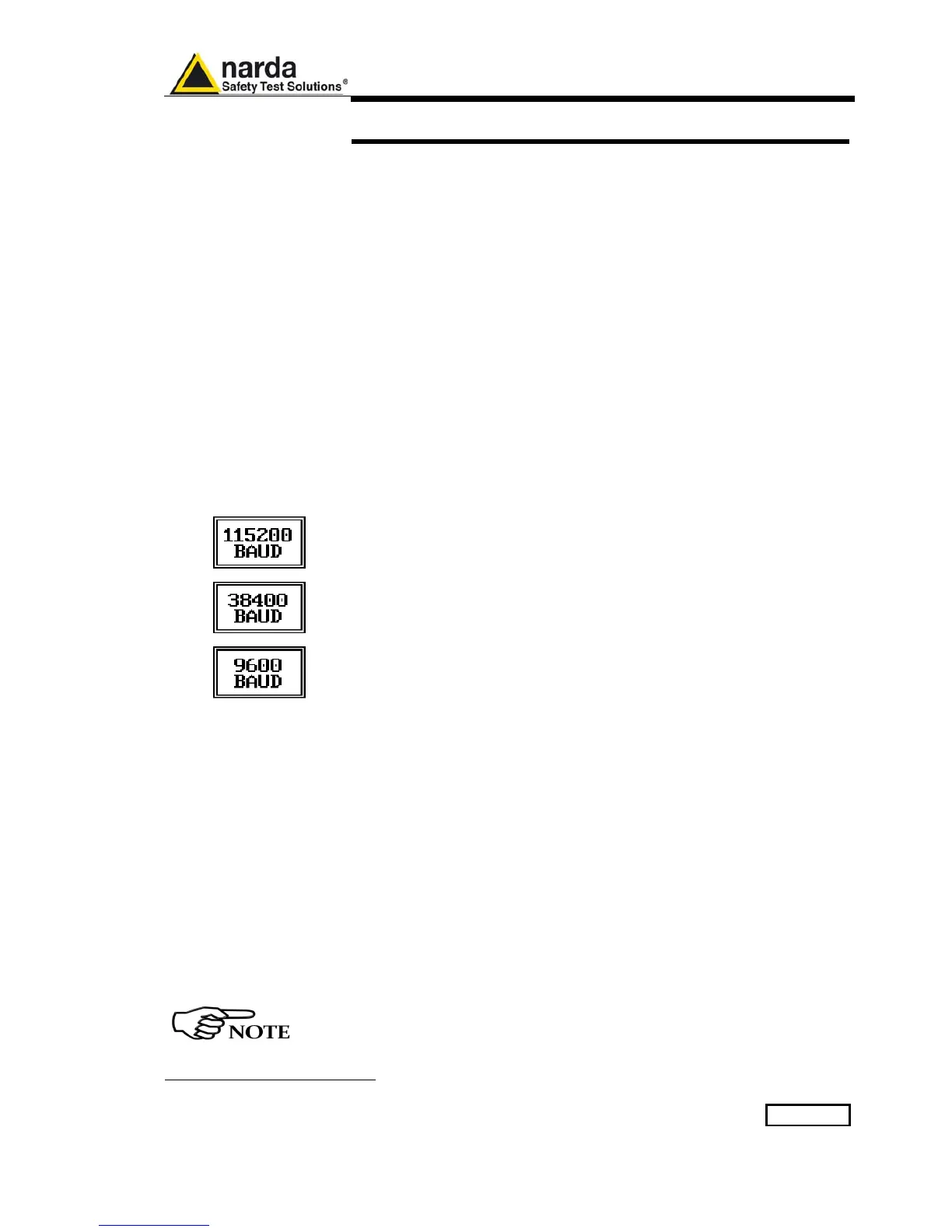Remote control 14-1
14 – Remote control
14.1 Introduction
PMM 9010 or PMM 9010/03P/30P/60P has been designed to allow remote
control operations through its either RS232 or USB (Rear) ports.
When using RS232 you can use only one instrument connected to PC
serial port. If using USB you can connect other instruments to the free
RS232 port and the PMM 9010 or PMM 9010/03P/30P/60P Receiver to the
USB 2.0.
PMM 9010 or PMM 9010/03P/30P/60P uses the same commands protocol
for both communications.
14.2 Communication
Half duplex communication is implemented. The RS232 port has a DB-9
female connector and the USB 2.0 has a USB-B connector.
A built-in automatic tool identify the type of communication used.
Standard communication is implemented at 115200 (default), 38400, 9600
bit/sec with 8 bit words, one start bit, one stop bit and no parity
(115200 N 8 1).
Rel 1.30 and later when supported by FPGA 0x1E and later supports also
RTS/CTS Handshake.
14.2.1 RS 232 (Speed)
Under Setup menu, as described in chapter 3 of this manual, there is the
RS232 speed selection.
Pressing the Left or the Right Arrow key, inside the Setup menu, the
second page appears. In the second page is the RS 232 Port speed
setting function.
Here it is possible to set the bit rate of the RS 232 serial port which
connector is located on the rear panel.
The actual setting is always shown between the parenthesis and it is
possible to choose between 9600, 38400 and 115200 bps.
The default speed, that is the one to be used for standard communication,
is 115200.
In case an optional device (ex. GPIB interface) is to be connected to the
RS 232 port, refer to its operating manual to know the correct speed to be
selected.
14.3 Protocol
Be aware that only the PC can send the commands. PMM 9010 or PMM
9010/03P/30P/60P will answer when is inquired only.
The communication uses strings with variable byte width. The characters
used inside the strings are in ASCII format (00 - 127) at 7 bits. The most
significant bits are ignored in reception and set to 0 during transmission.
Every string starts with the special character “#” and stops with “*”.
14.4 Format
Commands are made of ASCII string delimited character “#” (0x23) and
the character “*”(0x2A)
Replies are terminated with <CR><LF> (\r\n)
All the following examples are indifferently referred to the PMM 9010
or the PMM 9010/03P/30P/60P.
Document 9010EN-81037-2.57 - © NARDA 2018

